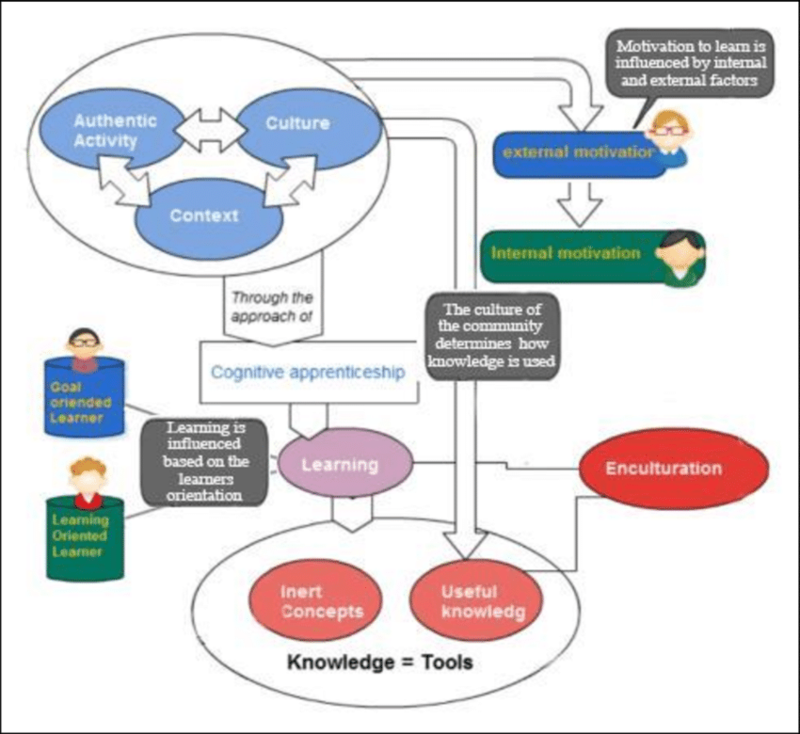e-Learning Ecologies MOOC’s Updates
Situated cognition
A definition by Wikipedia states, “Situated cognition is a theory that posits that knowing is inseparable from doing by arguing that all knowledge is situated in activity bound to social, cultural and physical contexts.” It views knowledge holistically. The concept is connected to where you learned it, experiencing the concept practically, and the utility that the concept provides you. This is different from the traditional theory that facts and knowledge are individual items in our brain that we can recall and interpret independently.
This concept of situated cognition ties into many areas of study including psychology, philosophy, linguistics, and also education. When we focus on the educational impact of situational cognition, it is referred to as situational learning.
One approach to situational learning is Cognitive apprenticeship. This structures learning around an expert and novice relationship. Through this relationship, the novice gets to see what the goal of the educational pursuit looks like in the expert; they get a guided tangible experience and are able to use all of the experience in order to gain authentic knowledge about the subject. The Cognitive apprenticeship fully utilizes the social, cultural, and physical contexts associated with Situated Cognition.
Another approach to situational learning is project-based learning. This is consistent with the new learning approaches that are covered in this week's session. With the Volcanoes example, the student is able to gain a tangible social context in the recursive feedback given by other students. They are also given physical context by not just reading about volcanoes but creating a 3D structure to tie the concepts together.
Situational learning is a modern view of how learning can take place. It seems to support the affordances granted by technology. Keeping this in mind we should be using the technology to create learning in context. The technology should not treat the information as a separate item, but illustrate the social, cultural, and physical context that bring meaning to the information.
References:
https://en.wikipedia.org/wiki/Situated_cognition
https://www.researchgate.net/figure/Abbys-concept-map-on-situated-cognition-translated-where-appropriate-and-modified-to_fig3_325856544
https://www.youtube.com/watch?v=9rCwwUT9t04



@Joseph, I totally agree with your closing thoughts on keeping context clear when using technology. Have you seen this article? Chang, W.-C & Chang, Chiungsui & Yang, Hsuan-Che & Jheng, M.-R. (2013). Game-Based History Ubiquitous Learning Environment Through Cognitive Apprenticeship. Lecture Notes in Electrical Engineering. 253. 617-625. 10.1007/978-94-007-6996-0-65. Game based learning involves interesting story, interaction and competition elements which promote the imagination, interest, concentration and creativity of the learner. Besides, ubiquitous learning integrates location-aware and context-aware technology in our living environment. Learners are motivated by firsthand or second historical relics. Visiting and interview activities with old people also promote learners have history thinking. Combining the u-learning environment and cognitive apprenticeship which reveals the solving problem inner progress from the expert, learners observe, learn, scaffold and exploration in the proposed system. The game-based history ubiquitous learning environment integrated into cognitive apprenticeship theory. The learners can challenge the game tasks by their own group or compete with other teams or collaborate with other teams.